I. Introduction
“`html
Welcome to the ultimate guide on best workout routines for beginners Whether you’re looking to get in shape, improve your health, or simply feel more energetic, this article is designed to help you find the perfect exercise plan tailored specifically for those just starting out.
Starting a new fitness journey can be intimidating, especially if you’re new to working out. But don’t worry; we’ve got you covered with these beginner-friendly workout routines that are easy to follow and effective in achieving your goals.
Before diving into the routines, it’s important to understand that consistency and patience are key. It’s not about doing a lot at once but rather making small changes that add up over time. Here are some tips to keep in mind:
- Start Slow: Begin with shorter sessions (20-30 minutes) and gradually increase duration as your body adapts.
- Listen to Your Body: Rest when needed; overexertion can lead to injury or burnout.
- Stay Hydrated: Proper hydration is crucial for muscle recovery and overall performance.
- Find an Exercise You Enjoy: Engage in activities that bring you joy; this will make sticking to a routine much easier.
Now let’s dive into some of the best workout routines for beginners that you can start today:
Bodyweight exercises are perfect for those who don’t have access to a gym or prefer working out at home. Here are some effective bodyweight exercises:
- Push-ups
- Pull-ups (or assisted pull-ups)
- Squats
- Lunges
- Planks
Cardio exercises help improve cardiovascular health and burn calories efficiently
II. Understanding Your Fitness Goals
A. Weight Loss
When aiming for weight loss, it’s crucial to understand that the best workout routines for beginners often involve a combination of cardiovascular exercises and strength training. Cardiovascular activities such as running, cycling, or swimming help burn calories and improve overall cardiovascular health. For example, a 30-minute brisk walk can burn approximately 150-200 calories, depending on your weight and pace.
Strength training is also essential for weight loss as it helps build muscle mass. The more muscle you have, the higher your resting metabolic rate will be, meaning you’ll burn more calories at rest. Incorporating exercises like squats, lunges, and deadlifts into your routine can significantly contribute to weight loss goals.
Here are some effective weight loss tips for beginners:
- Start with short sessions (20-30 minutes) and gradually increase duration as you get more comfortable.
- Include high-intensity interval training (HIIT) for efficient calorie burn.
- Avoid overeating by focusing on balanced meals with plenty of fruits and vegetables.
B. Muscle Building
Muscle building requires a different approach than weight loss. The primary focus should be on resistance training exercises that challenge your muscles to grow. This typically involves lifting weights or using resistance bands.
A well-rounded muscle-building routine should include exercises targeting all major muscle groups such as chest, back, shoulders, legs, and core. For instance:
- Bench Press for chest muscles.
- Deadlifts for back and leg muscles.
- Shoulder Press for shoulder muscles.
It’s also important to consider proper nutrition when aiming to build muscle. Adequate protein intake is essential as it provides the necessary building blocks for muscle growth. Aim for at least 1 gram of protein per kilogram of body weight daily.
Here’s a sample muscle-building workout routine:
| Day | Exercise | Repetitions | Sets |
|---|---|---|---|
| Monday | Bench Press | 8-12 reps | 3-4 sets |
| Tuesday | Deadlifts | 8-12 reps | 3-4 sets |
| Wednesday | Rest Day | – | – |
| Thursday | Shoulder Press | 8-12 reps | 3-4 sets |
C. Cardiovascular Health
Cardiovascular health is crucial for overall well-being and longevity. Regular cardiovascular exercises improve heart function, reduce blood pressure, and enhance oxygen delivery throughout the body.
Some effective cardiovascular exercises include:
- Brisk Walking: A low-impact activity that can be done anywhere.
- Cycling: Stationary bikes or outdoor cycling are excellent options.
- Swimming: A low-impact exercise that’s easy on joints.
For those new to fitness, starting with shorter sessions (20-30 minutes) and gradually increasing duration as you get more comfortable is recommended. For example, you could start with three 20-minute sessions per week and gradually move up to five 30-minute sessions per week.
Remember to always consult with a healthcare professional before starting any new exercise program, especially if you have any underlying health conditions or concerns.
For more detailed information on best workout routines for beginners, visit Healthline.
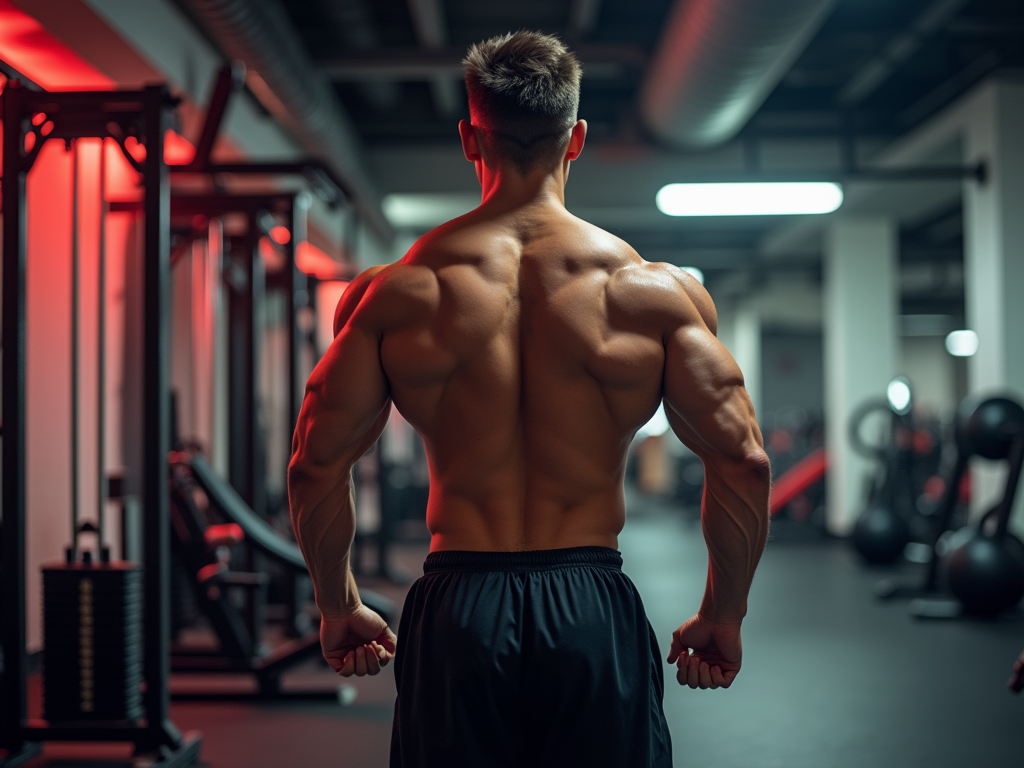
**Quote:** “Start with small steps, and you’ll be running marathons in no time.”
III. Basic Principles of Exercise
A. WarmUp and CoolDown
When starting any exercise routine, it’s crucial to begin with a proper warm-up session. This helps increase blood flow to your muscles, reduces the risk of injury, and prepares your body for physical activity. A good warm-up should include light cardio exercises such as jogging in place or jumping jacks, followed by dynamic stretching that targets the specific muscles you’ll be using during your workout.
For example, if you’re about to do a leg day, you might start with some leg swings and lunges. This not only gets your muscles ready but also helps prevent common injuries like pulled hamstrings or strained quadriceps.
B. Proper Form and Technique
Proper form and technique are essential for getting the most out of your workout while minimizing the risk of injury. Here are some key points to keep in mind:
- Body Alignment: Ensure that your body is aligned correctly throughout each exercise. For instance, when doing squats, keep your back straight and knees behind your toes.
- Weight Distribution: Properly distribute the weight you’re lifting to avoid putting unnecessary strain on any one part of your body.
- Range of Motion: Use a full range of motion when performing exercises to engage all relevant muscle groups effectively.
For example, when performing bicep curls with dumbbells, make sure to curl the weight all the way up towards your shoulders before lowering it back down. This ensures that you’re targeting both the biceps and brachialis muscles effectively.
C. Rest and Recovery
Rest and recovery are often overlooked but are just as important as the actual workout itself. Adequate rest allows your muscles time to repair and rebuild, which is crucial for muscle growth and strength gains.
Here’s how you can incorporate rest into your routine:
- Active Recovery: Engage in low-intensity activities like yoga or light cardio on rest days to promote blood flow without putting excessive strain on your muscles.
- Passive Recovery: Take time off from intense physical activity to allow your body complete rest.
Additionally, make sure you’re getting enough sleep each night (7-9 hours for most adults) as this also plays a significant role in muscle recovery.
Best Workout Routines for Beginners
When starting out with a new exercise routine, it’s best to begin with simple yet effective workouts that target multiple muscle groups at once. Here’s a sample routine you might consider:
| Day | Workout | LSI Keywords |
|---|---|---|
| Monday | Upper Body Workout | push-ups, bicep curls, tricep dips |
| Tuesday | Lower Body Workout | squats, lunges, leg press |
| Wednesday | Rest Day | active recovery |
| Thursday | Core Workout | plank, Russian twists |
| Friday | Full Body Workout | burpees, mountain climbers |
| Saturday & Sunday | Rest Days | passive recovery |
Remember to start slow and gradually increase the intensity and duration of your workouts as you become more comfortable. It’s also important to listen to your body and take extra rest days if needed.
For more detailed information on creating an effective workout routine tailored specifically for beginners, check out this article from Healthline which provides comprehensive guidance on how to get started with exercise safely and effectively.
By following these basic principles of exercise—warm-up and cool-down routines, proper form and technique, and adequate rest and recovery—you’ll be well on your way towards achieving your fitness goals while minimizing the risk of injury.
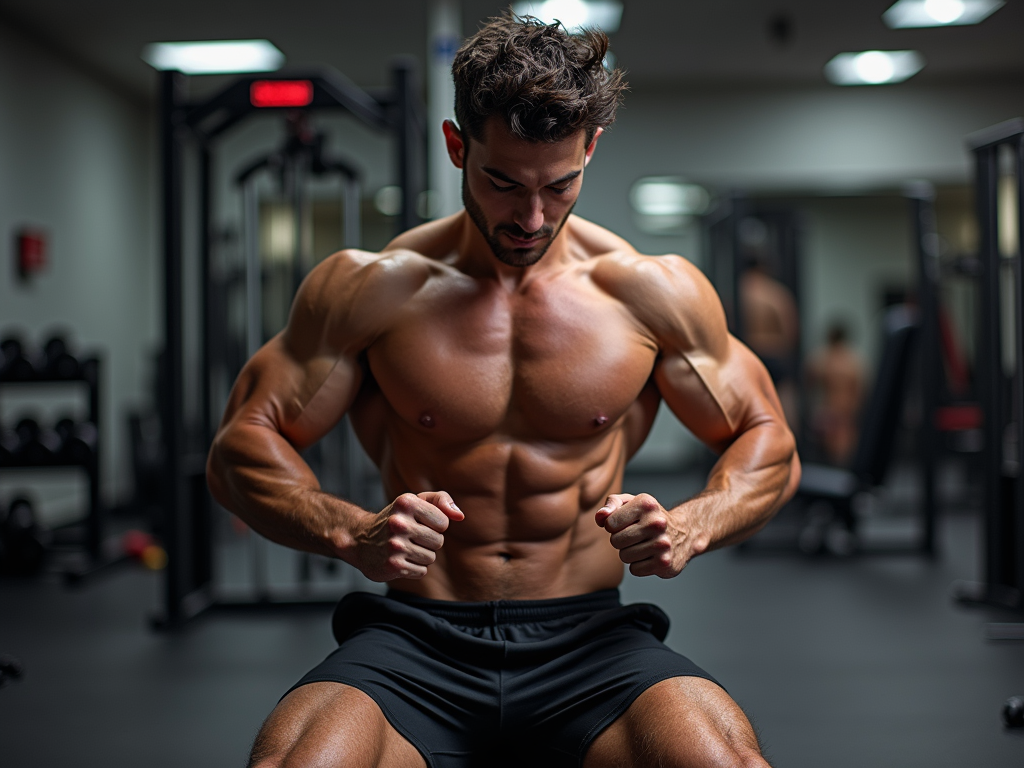
**”Start small, but start strong. Consistency is key in any fitness journey.”** – **Lena Thompson, Personal Trainer**
IV. Top 5 Workout Routines for Beginners
When it comes to best workout routines for beginners, finding the right combination of exercises and intensity can be overwhelming. However, with the right approach, anyone can start their fitness journey effectively. Here are five top-rated workout routines that are perfect for those just starting out:
A. Bodyweight Exercises
Bodyweight exercises are an excellent way to get started with beginner-friendly workouts. These exercises use your own body weight as resistance, making them accessible anywhere without any equipment. Some popular bodyweight exercises include push-ups, squats, lunges, planks, and sit-ups.
- Push-ups: A classic exercise that targets the chest muscles.
- Squats: Works multiple muscle groups including legs and glutes.
- Lunges: Targets legs and improves balance.
- Planks: Strengthens core muscles.
- Sit-ups: Targets abdominal muscles.
B. Resistance Band Workouts
Resistance bands are lightweight, portable, and inexpensive, making them ideal for home workouts. They provide variable resistance levels which can be adjusted according to your fitness level. Some common resistance band exercises include banded squats, banded lunges, banded chest presses, and banded rows.
| Exercise | Description |
|---|---|
| Banded Squats | Targets legs with added resistance from the band. |
| Banded Lunges | Works legs and glutes with variable resistance. |
| Banded Chest Presses | Targets chest muscles using resistance bands. |
| Banded Rows | Works back muscles effectively. |
C. Yoga for Beginners
Yoga is not just about flexibility; it also offers numerous health benefits including stress reduction and improved balance. For beginners, starting with gentle flows like Hatha Yoga or Vinyasa Flow can be very beneficial. These styles focus on basic postures that help build foundational strength and flexibility.
- Hatha Yoga: Focuses on physical postures (asanas) and breathing techniques (pranayama).
- Vinyasa Flow: Involves flowing movements between poses.
D. High-Intensity Interval Training (HIIT)
HIIT involves short bursts of high-intensity exercise followed by brief periods of rest or low-intensity exercise. This type of training is excellent for burning calories efficiently while improving cardiovascular fitness quickly. For example, you could do sprints in place followed by walking in place for recovery.
- Sprints in Place: High-intensity movement that targets cardiovascular system.
- Walking in Place: Low-intensity recovery phase.
E. Home Gym Equipment
Investing in basic home gym equipment like dumbbells or kettlebells can significantly enhance your workout routine at home. These tools allow you to perform various exercises such as bicep curls, shoulder presses, squats with weights, etc., which are essential for building overall strength.
- Dumbbells: Versatile tool for performing multiple exercises like bicep curls and shoulder presses.
- Kettlebells: Similar to dumbbells but offers more dynamic movements like swings and cleans.
Remember to always consult with a healthcare professional before starting any new exercise regimen. It’s also important to listen to your body and adjust the intensity based on how you feel during each workout session.
For more detailed information on these beginner-friendly workouts, check out this article from Healthline which provides comprehensive guides tailored specifically for those just starting out.
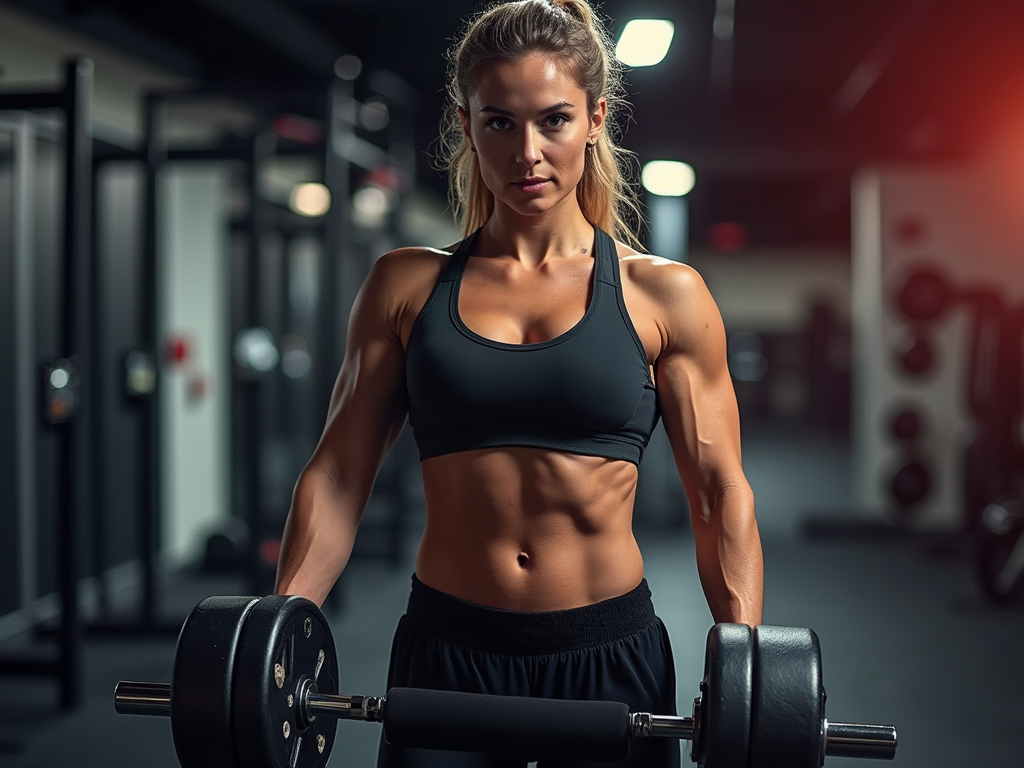
**Quote:** “Start with small steps, and you’ll be running marathons in no time.”
V. Sample Workout Plans
A. Monday
Start your week off right with a balanced routine that includes both strength training and cardio exercises. For beginners, it’s essential to focus on building a strong foundation in basic movements like squats, lunges, push-ups, and rows. Here’s a sample Monday workout plan:
- Warm-Up: 5-10 minutes of light cardio such as jogging in place or jumping jacks.
- Strength Training:
- Squats: 3 sets of 10 reps
- Lunges: 3 sets of 10 reps (per leg)
- Push-ups: 3 sets of as many reps as possible
- Rows (using dumbbells): 3 sets of 10 reps
- Cardio: 20-30 minutes of steady-state cardio such as jogging or cycling.
B. Tuesday
Tuesday is a great day to focus on upper body strength and flexibility. Incorporate exercises that target your arms, shoulders, and back muscles. Here’s a sample Tuesday workout plan:
- Warm-Up: 5-10 minutes of light cardio.
- Strength Training:
- Bicep Curls (using dumbbells): 3 sets of 10 reps
- Tricep Dips (using a chair or bench): 3 sets of 10 reps
- Shoulder Press (using dumbbells): 3 sets of 10 reps
- Lat Pulldowns (using a resistance band): 3 sets of 10 reps
- Flexibility Exercises:
- Arm Circles: Hold arms straight out to the sides and make small circles with your hands for 10-15 reps.
- Shoulder Rolls: Roll your shoulders forward and backward in a circular motion for 10-15 reps.
C. Wednesday
Wednesday is a great day to mix things up with some core exercises and high-intensity interval training (HIIT). Core exercises will help improve your balance and stability, while HIIT will boost your metabolism and burn calories efficiently. Here’s a sample Wednesday workout plan:
- Warm-Up: 5-10 minutes of light cardio.
- Core Exercises:
- Plank: Hold a plank position for as long as possible (aiming for at least 30 seconds).
- Russian Twists (using a weight or medicine ball): 3 sets of 10 reps per side.
- Bicycle Crunches: 3 sets of 10 reps per side.
- HIIT Session:
Exercise Duration Rest Time Sprints 30 seconds 30 seconds Jumping Jacks 30 seconds 30 seconds Mountain Climbers 30 seconds 30 seconds
D. Thursday
Thursday is another day focused on lower body strength and endurance. Incorporate exercises that target your legs, glutes, and calves. Here’s a sample Thursday workout plan:
- Warm-Up: 5-10 minutes of light cardio.
- Strength Training:
- Squats with weights or bodyweight: 3 sets of 10 reps.
- Lunges with weights or bodyweight: 3 sets of 10 reps per leg.
- Calf Raises (using weights or bodyweight): 3 sets of 15 reps.
- Cardio: 20-30 minutes of steady-state cardio such as jogging or cycling.
E. Friday
Friday is a great day to wrap up your week with some full-body exercises that will help improve overall fitness and burn calories efficiently. Here’s a sample Friday workout plan:
- Warm-Up: 5-10 minutes of light cardio.
- Full-Body Exercises:
- Deadlifts (using weights): 3 sets of 8 reps.
- Burpees: 3 sets of as many reps as possible.
- Jump Squats: 3 sets of as many reps as possible.
- Cardio Blast: Finish off your week with a high-intensity cardio session like sprints or burpees for 10-15 minutes.
Remember to always listen to your body and adjust the intensity and volume of your workouts based on how you feel. It’s also important to incorporate rest days into your routine to allow for recovery and muscle growth. For more detailed information on creating effective workout routines for beginners, check out this article from Healthline.
By following these sample workout plans, you’ll be well on your way to developing a consistent fitness routine that includes both strength training and cardio exercises tailored specifically for beginners. Always remember to stay hydrated throughout each workout session and consult with a healthcare professional before starting any new exercise program.
**Best Workout Routines for Beginners:** These plans are designed to help you build a strong foundation in
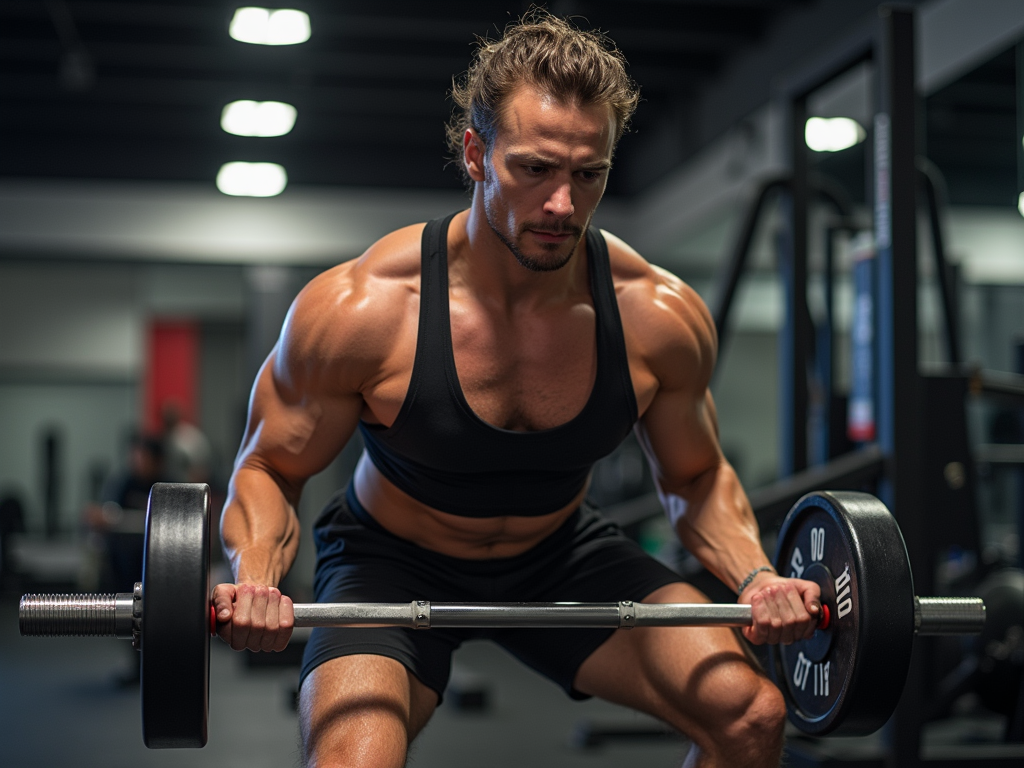
**Quote:** “Start small, stay consistent, and you’ll be on your way to a healthier you in no time.”
VI. Incorporating Cardio
When it comes to best workout routines for beginners, incorporating cardio exercises is essential for improving cardiovascular health and burning calories. Here are some effective ways to get started:
A. Running or Jogging
Running or jogging is one of the most accessible and effective cardio exercises for beginners. It can be done almost anywhere and requires minimal equipment. Here are some tips to get you started:
- Start with short distances: Begin with short runs or jogs around your neighborhood or local park.
- Gradually increase duration: As you get more comfortable, gradually increase the duration of your runs.
- Listen to your body: Pay attention to your body and take rest days when needed.
B. Swimming or Cycling
Swimming and cycling are low-impact cardio exercises that are easy on the joints but still provide an excellent workout. Here’s how you can incorporate them into your routine:
- Swimming: Swimming laps in a pool is another great way to improve cardiovascular fitness without putting excessive strain on your joints.
- Cycling: Stationary cycling or using a spin bike at home can be just as effective as running but with less impact on your joints.
C. Dancing or Zumba
Dancing and Zumba classes offer fun and engaging ways to get your heart rate up while improving coordination and balance. Here’s why they’re great for beginners:
- Low-impact: These activities are low-impact, making them suitable for those who may have joint issues or prefer not to high-impact exercises.
- High-energy: They provide high-energy workouts that can be just as effective as traditional cardio exercises in burning calories.
For more detailed information on creating a balanced workout routine that includes these activities, check out this article which provides comprehensive tips and strategies.
| Exercise | Description | Benefits |
|---|---|---|
| Running/Jogging | A high-intensity exercise that improves cardiovascular health and burns calories. | Improves cardiovascular health, increases endurance, and boosts metabolism. |
| Swimming/Cycling | Low-impact exercises that are easy on the joints but still provide an excellent workout. | Reduces joint stress, improves cardiovascular fitness, and enhances muscle tone. |
| Dancing/Zumba | Fun and engaging activities that improve coordination and balance while providing a great cardio workout. | Improves coordination and balance, increases energy levels, and provides a fun way to stay active. |
Remember to always consult with a healthcare professional before starting any new exercise program. It’s also important to listen to your body and adjust your routine accordingly to avoid injury or burnout.
By incorporating these cardio exercises into your routine, you’ll be well on your way to achieving your fitness goals while enjoying the process along the way!

**Quote:** “Start small, stay consistent, and you’ll be on your way to a healthier you in no time.”
VII. Nutrition and Hydration
A. Balanced Diet
When it comes to best workout routines for beginners, a balanced diet is crucial for optimal performance and recovery. A well-balanced diet should include a variety of foods from all food groups, ensuring you get the necessary nutrients like protein, carbohydrates, fats, vitamins, and minerals.
Here are some key components of a balanced diet:
- Protein: Essential for muscle growth and repair. Include sources like lean meats (chicken, turkey), fish (salmon, tilapia), eggs, dairy products (milk, cheese), legumes (lentils, beans), nuts (almonds, walnuts), and seeds (chia seeds, flaxseeds).
- Carbohydrates: Provide energy for workouts. Focus on complex carbs like whole grains (brown rice, quinoa), fruits (apples, bananas), and vegetables (broccoli, spinach).
- Fats: Important for hormone production and brain function. Opt for healthy fats found in avocados, olive oil, nuts, and seeds.
Additionally, consider the following tips:
- Hydration: Drink plenty of water throughout the day to stay hydrated. Aim for at least eight glasses of water daily.
- Meal Frequency: Eat smaller meals more frequently to maintain stable energy levels throughout the day.
B. Hydration Tips
Proper hydration is vital for any workout routine. Here are some hydration tips:
- Drink Before Workouts: Make sure to drink water at least 30 minutes before starting your workout to ensure you’re well-hydrated.
- Monitor Urine Color: If your urine is dark yellow or amber-colored, it may indicate dehydration. Aim for a light yellow color.
- Electrolytes: Include electrolyte-rich beverages like coconut water or sports drinks during intense workouts to replenish lost salts.
C. Post-Workout Snacks
A post-workout snack helps in replenishing energy stores and promoting muscle recovery. Here are some recommendations:
- Protein-Rich Snacks: Consume snacks high in protein within 30-60 minutes after your workout to aid in muscle repair. Examples include Greek yogurt with berries or a protein smoothie.
- Complex Carbohydrates: Include snacks rich in complex carbohydrates like whole grain crackers with peanut butter or banana slices.
Here’s an example table showing some post-workout snack options:
| Snack | Protein Content | Carbohydrate Content |
|---|---|---|
| Greek Yogurt with Berries | 20g | 30g |
| Protein Smoothie (Banana, Spinach, Protein Powder) | 30g | 40g |
| Whole Grain Crackers with Peanut Butter | 8g | 20g |
For more detailed information on best workout routines for beginners, including nutrition tips and sample meal plans, visit Healthline.
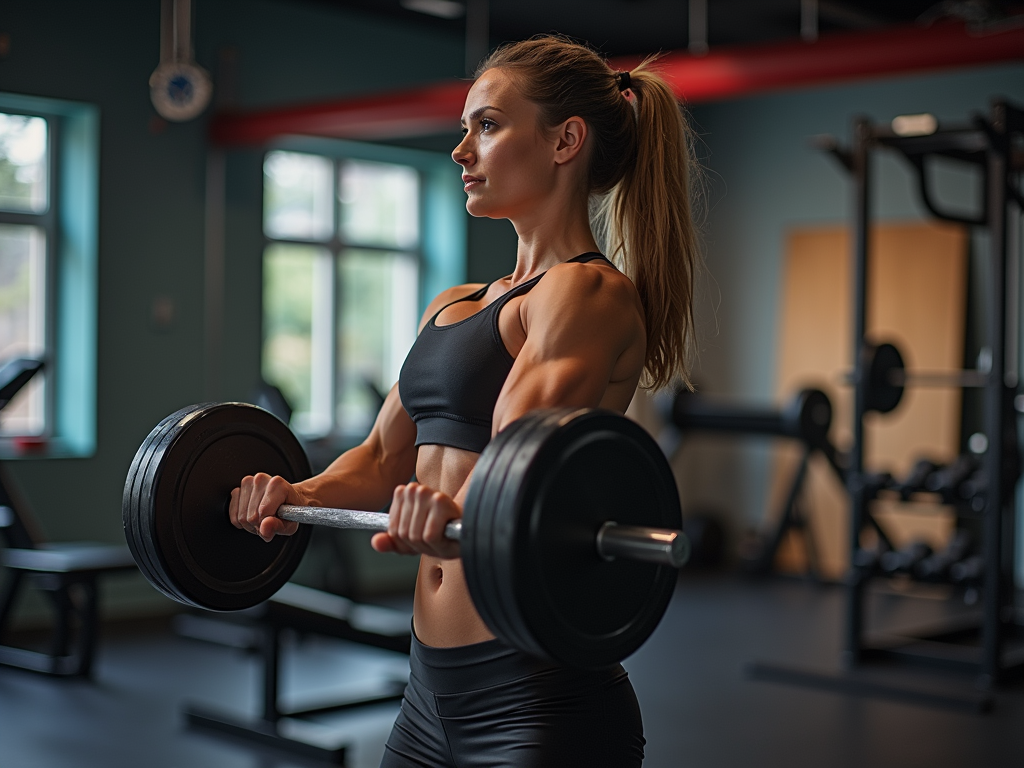
**”Start small, stay consistent. Even a few minutes of exercise each day can make a big difference.” – Emily Thompson, Personal Trainer**
VIII. Common Mistakes to Avoid
A. Overexertion
When starting out with best workout routines for beginners, it’s easy to get caught up in the excitement and push yourself too hard. Overexertion can lead to injuries and burnout, which are major setbacks for anyone just starting their fitness journey. Always listen to your body and take regular breaks to avoid exhaustion.
B. Poor Form
Poor form is another common mistake that beginners make when trying out best workout routines for beginners. Using incorrect techniques can put unnecessary strain on your muscles and joints, increasing the risk of injury. It’s crucial to learn proper form before starting any exercise routine. You can find detailed guides on proper form through resources like Healthline.
C. Inconsistent Schedules
Inconsistent schedules can make it difficult to see progress in your fitness journey. To avoid this, create a routine that you can stick to consistently. Aim for at least three times per week, but ideally five if you’re just starting out with best workout routines for beginners. Consistency is key when it comes to building muscle and improving cardiovascular health.
D. Additional Tips
Besides avoiding overexertion, poor form, and inconsistent schedules, here are some additional tips to keep in mind:
- Start Slow: Don’t try to do too much too soon. Gradually increase the intensity and duration of your workouts as you get more comfortable.
- Warm Up Properly: Always warm up before starting any exercise routine with light cardio or dynamic stretching.
- Stretch After Workouts: Stretching after your workout helps prevent muscle soreness and improves flexibility.
E. Sample Workout Routine
Here’s an example of a simple yet effective workout routine for beginners:
| Day | Exercise | Reps/ Sets |
|---|---|---|
| Monday | Burpees | 3 sets of 10 reps |
| Monday | Squats | 3 sets of 12 reps |
| Tuesday | Push-ups | 3 sets of 15 reps |
| Wednesday | Rest Day | – |
| Thursday | Planks | 3 sets holding for 30 seconds each |
| Friday | Jumping Jacks | 3 sets lasting 30 seconds each |
Remember, consistency is key when it comes to seeing results from best workout routines for beginners. Stick to your routine, listen to your body, and always focus on proper form.
For more detailed information on creating effective workout routines tailored specifically for beginners, you can refer to resources like Fitness Blender.
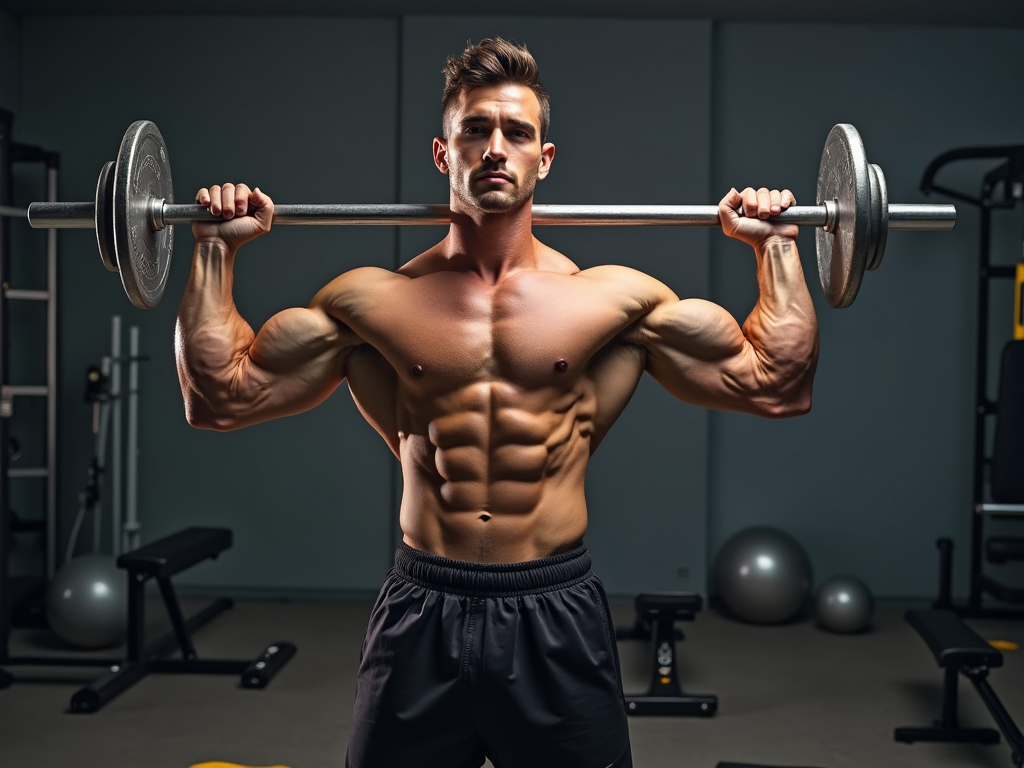
**Quote:** “Start small, stay consistent, and you’ll be on your way to a healthier you in no time.”
IX. Tracking Progress
A. Using a Fitness Tracker
One of the most effective ways to track your progress is by using a fitness tracker. These devices can monitor your daily activity levels, heart rate, and even sleep patterns. By setting goals and tracking your daily steps, you can see how far you’ve come and stay motivated to continue improving your fitness journey. For instance, if you’re following best workout routines for beginners, a fitness tracker can help you stay on track with your exercise goals.
B. Taking Progress Photos
Another important aspect of tracking progress is taking regular progress photos. This helps you visually see the changes in your body over time. It’s especially useful for beginners who may not know what to expect from their workout routines. By comparing photos from different periods, you’ll be able to see how far you’ve come and make adjustments as needed.
C. Monitoring Workouts
Monitoring your workouts is crucial for tracking progress effectively. This includes keeping a log of the exercises you do, the weight or resistance level you use, and how many repetitions you complete. You can also use apps that allow you to log your workouts and track your progress over time. For example, if you’re following a beginner’s workout routine, monitoring your workouts will help you identify which exercises are most effective for your goals.
D. Setting Goals and Rewards
Setting specific goals and rewarding yourself when you achieve them is another powerful way to track progress. Whether it’s losing a certain amount of weight or completing a certain number of workouts per week, having clear goals will help keep you motivated and focused on your fitness journey. For instance, if one of your goals is to improve cardiovascular health through best cardio workouts for beginners, setting milestones and rewarding yourself when reached can make the journey more enjoyable.
E. Using Technology to Track Progress
Technology has made it easier than ever to track progress in fitness. From mobile apps that track daily activity levels to online platforms that monitor workout routines, there are numerous tools available that can help beginners stay on track with their workout plans. For example, apps like MyFitnessPal can help you monitor your diet while apps like Strava can track your runs or bike rides.
F. Creating a Workout Log
A workout log is an essential tool for tracking progress in any fitness journey. By writing down each exercise performed along with details such as weight lifted or number of repetitions completed, you’ll be able to see patterns emerge over time. This helps identify which exercises are most effective for achieving specific goals related to best workout routines for beginners. Here’s an example table format for logging workouts:
| Date | Exercise | Weight/Resistance | Repetitions |
|---|---|---|---|
| 2023-10-01 | Squats | 10 kg | 12 reps |
| 2023-10-02 | Bench Press | 8 kg | 15 reps |
G. Staying Consistent
Consistency is key when it comes to tracking progress in fitness. It’s easy to get excited about starting a new routine but maintaining that enthusiasm over time requires discipline and commitment. By incorporating habits like regular exercise into your daily routine, you’ll find it easier to stay consistent with your workout plans. Here are some tips for staying consistent:
- Set reminders on your phone or calendar.
- Find a workout buddy for accountability.
- Track your progress regularly.
- Make adjustments as needed based on feedback from tracking tools.
H. Celebrating Milestones
Celebrating milestones along the way can help keep you motivated throughout your journey towards achieving best workout routines for beginners. Whether it’s reaching a certain number of workouts completed or losing a specific amount of weight, acknowledging these achievements will help reinforce positive behaviors associated with regular exercise.
For more detailed information on how technology can aid in tracking progress during beginner’s workout routines, consider checking out this article from Healthline which provides an overview of various tools available for monitoring fitness goals.
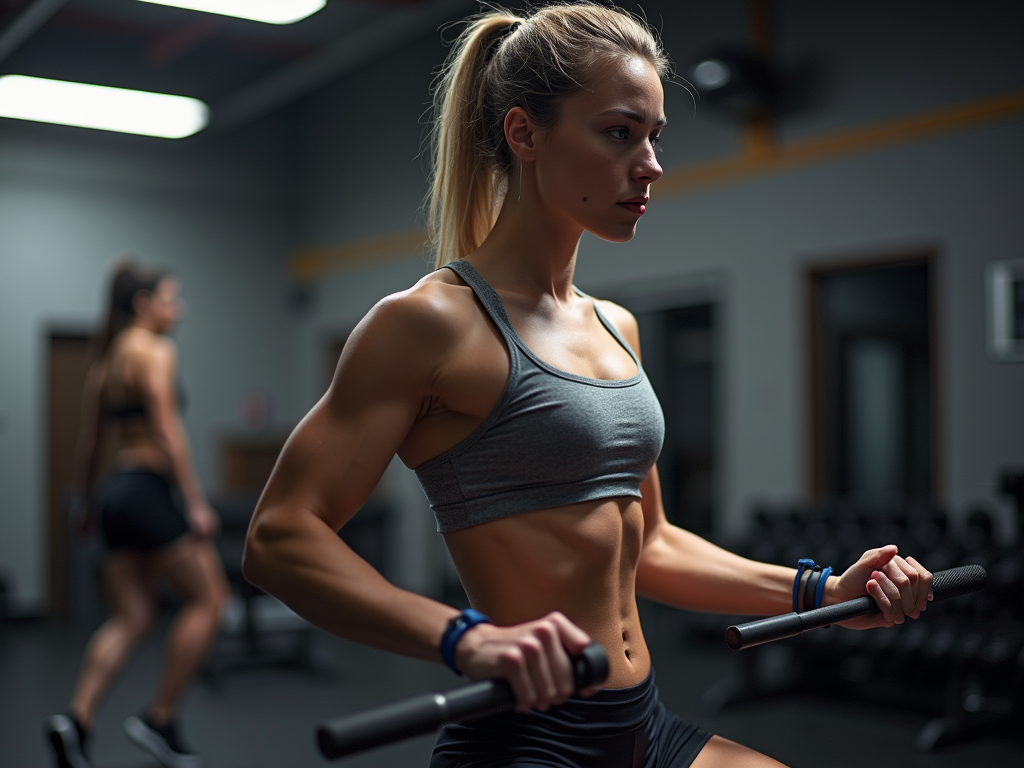
**Quote:** “Start small, but start strong. Consistency is key in any fitness journey.”
X. Staying Motivated
A. Setting Realistic Goals
When starting a new exercise routine, it’s crucial to set realistic goals. This helps maintain motivation and prevents burnout. For beginners, aiming to work out 3-4 times a week is a good starting point. Setting specific, achievable goals like running a certain distance or completing a set number of exercises can keep you focused and motivated.
B. Finding a Workout Buddy
A workout buddy can significantly enhance your motivation levels. Having someone to share the experience with makes it more enjoyable and helps in staying accountable. You can find workout buddies through local gyms, online communities, or even social media groups dedicated to fitness enthusiasts.
C. Rewarding Yourself
Rewarding yourself after reaching certain milestones is another effective way to stay motivated. This could be something as simple as treating yourself to a post-workout smoothie or buying new workout gear. Celebrating small victories keeps you engaged and motivated to continue your journey towards fitness.
Best Workout Routines for Beginners
The best workout routines for beginners should be designed to gradually increase intensity and duration while focusing on proper form and technique. Here are some effective routines:
- Bodyweight Exercises: Squats, push-ups, lunges, and planks are excellent for building strength without needing any equipment.
- Cardio Routines: Brisk walking, jogging in place, or using a stationary bike are great for improving cardiovascular health.
- Yoga and Pilates: These low-impact exercises help improve flexibility and balance while reducing stress levels.
Here’s a sample weekly routine incorporating these exercises:
| Day | Exercise Type | Duration/Repetitions |
|---|---|---|
| Monday | Bodyweight Exercises | 30 minutes (10 minutes each of squats, push-ups, lunges, and planks) |
| Tuesday | Cardio Routine | 20 minutes (jogging in place or using a stationary bike) |
| Wednesday | Rest Day | – |
| Thursday | Yoga/Pilates | 30 minutes (focus on flexibility and balance) |
| Friday | Cardio Routine | 20 minutes (brisk walking or jogging in place) |
| Saturday | Bodyweight Exercises | 30 minutes (10 minutes each of squats, push-ups, lunges, and planks) |
| Sunday | Rest Day | – |
Remember to listen to your body and adjust the routine as needed. It’s also important to consult with a healthcare professional before starting any new exercise program.
For more detailed information on creating effective workout routines for beginners, visit Healthline’s guide on best workout routines for beginners.
Staying motivated is key when it comes to achieving fitness goals. By setting realistic goals, finding a workout buddy, rewarding yourself along the way, and following a well-structured routine like the one outlined above, you’ll be well on your way towards becoming healthier and more active.
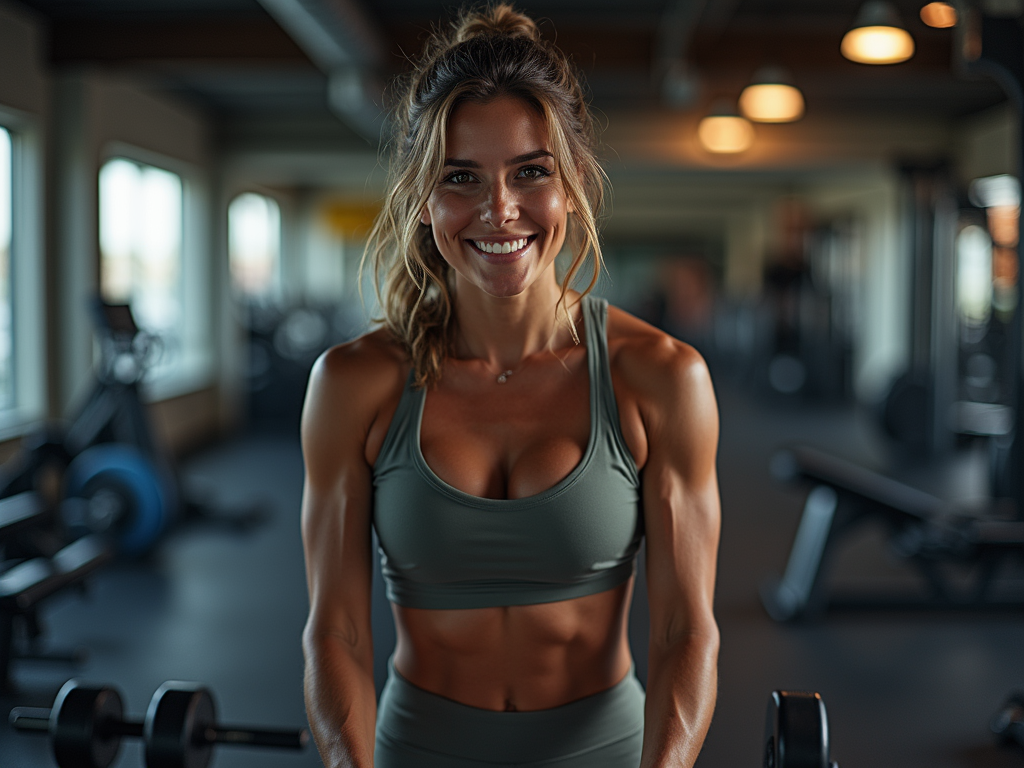
**Quote:** “Start small, stay consistent. Your body will thank you.”
XI. Safety Precautions for Best Workout Routines for Beginners
A. Consulting a Doctor
Before starting any new exercise routine, it is crucial to consult with a doctor, especially if you have any pre-existing medical conditions or concerns. This ensures that you are cleared for physical activity and can tailor your routine to meet your specific health needs.
B. Warming Up Properly
Warming up is an essential part of any workout routine. It helps prevent injuries by increasing blood flow and preparing your muscles for physical activity. A good warm-up should include light cardio such as jogging in place or jumping jacks, followed by dynamic stretching like arm circles and leg swings.
C. Using Proper Equipment
Using the right equipment is vital when engaging in physical activity. For beginners, it’s important to invest in good quality dumbbells, resistance bands, or a yoga mat. These tools will help you perform exercises safely and effectively.
Here are some key points to consider when choosing equipment:
- Weight Distribution: Ensure that the weight you’re lifting is evenly distributed to avoid straining specific muscles.
- Material Quality: Opt for durable materials that can withstand regular use.
- Adjustability: Choose equipment that allows for adjustments in weight or resistance levels.
For example, if you’re looking to start with bodyweight exercises, you might consider using a yoga mat to provide grip and cushioning during floor-based movements.
Here’s a table summarizing some essential pieces of equipment for beginners:
| Equipment | Description |
|---|---|
| Dumbbells | Adjustable weights used for strength training exercises. |
| Resistance Bands | Portable bands providing resistance for strength training. |
| Yoga Mat | Provides grip and cushioning for floor-based exercises. |
Additionally, incorporating proper form and technique into your workouts is crucial. Here are some tips:
- Focus on Form: Pay attention to how you’re performing each exercise to avoid injury.
- Start Slow: Gradually increase the intensity and difficulty as you become more comfortable with the routine.
- Listen to Your Body: Rest when needed, and don’t push yourself too hard.
For more detailed information on how to incorporate these safety precautions into your workout routine, visit Healthline’s guide on best workout routines for beginners.
Remember, consistency and patience are key when starting a new exercise regimen. By following these safety precautions and incorporating them into your routine, you’ll be well on your way to achieving your fitness goals while minimizing the risk of injury.
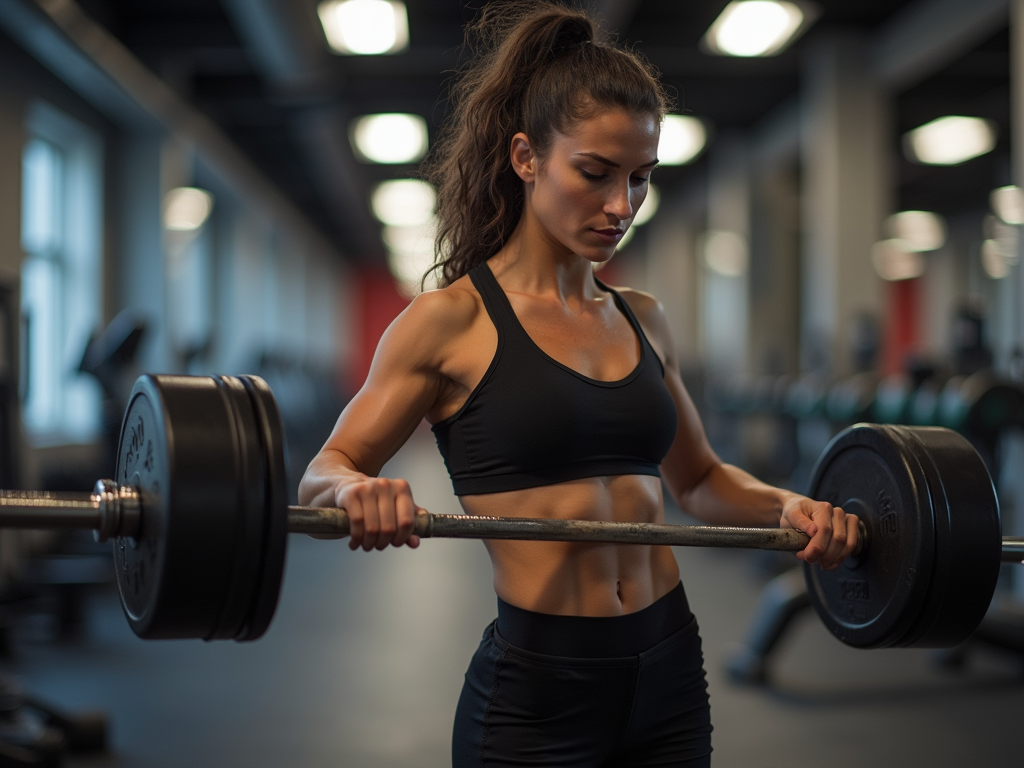
**”Start small, stay consistent. A beginner’s journey is all about progress, not perfection.” – Emily Thompson, Personal Trainer**
XII. Conclusion
As we conclude our comprehensive guide on best workout routines for beginners, it’s clear that starting a fitness journey can be both exciting and intimidating. However, with the right approach and knowledge, anyone can achieve their health and wellness goals.
Throughout this post, we’ve covered essential topics such as understanding your fitness goals, basic principles of exercise, top 5 workout routines for beginners, sample workout plans, incorporating cardio, nutrition and hydration tips, common mistakes to avoid, tracking progress, staying motivated, and safety precautions.
Let’s summarize the key takeaways from our discussion:
- Importance of Starting a Workout Routine: Regular exercise is crucial for overall health and well-being. It helps in weight loss, muscle building, and improving cardiovascular health.
- Choosing the Right Routine: Selecting a suitable workout routine is vital for beginners. Options like bodyweight exercises, resistance band workouts, yoga for beginners, high-intensity interval training (HIIT), and home gym equipment are all excellent choices.
- Sample Workout Plans: Creating a structured plan ensures consistency in your workouts. Monday through Friday sample plans provide a clear schedule to follow.
- Incorporating Cardio: Adding cardio activities such as running or jogging, swimming or cycling, dancing or Zumba helps in burning calories and improving cardiovascular health.
- Nutrition and Hydration Tips: A balanced diet along with proper hydration is essential for optimal performance during workouts. Post-workout snacks also play a significant role in recovery.
- Common Mistakes to Avoid: Overexertion, poor form, and inconsistent schedules are common pitfalls that beginners should avoid.
- Tracking Progress: Using a fitness tracker, taking progress photos, and monitoring workouts help in tracking progress effectively.
- Staying Motivated: Setting realistic goals, finding a workout buddy, and rewarding yourself are great ways to stay motivated throughout your fitness journey.
- Safety Precautions: Consulting a doctor before starting any new exercise routine is important. Proper warming up and using appropriate equipment also ensure safety during workouts.
By following these guidelines and incorporating them into your daily routine, you’ll be well on your way to achieving your fitness goals. Remember that consistency is key when it comes to best workout routines for beginners. Stay committed, stay motivated, and most importantly, enjoy the journey towards a healthier you!
Thank you for joining us on this informative journey If you have any further questions or need additional guidance on best workout routines for beginners, feel free to explore more resources available on our website
FAQ: best workout routines for beginners
1. What are the most effective exercises for beginners?
The most effective exercises for beginners include push-ups, squats, lunges, planks, and rows. These exercises work multiple muscle groups and can be modified to suit different fitness levels.
2. How often should I work out as a beginner?
As a beginner, it’s recommended to start with 2-3 times per week and gradually increase the frequency as your body adapts. Consistency is key but avoid overdoing it initially.
3. What is the best way to warm up before a workout?
The best way to warm up before a workout is with light cardio such as jogging in place or jumping jacks followed by dynamic stretching like arm circles and leg swings.
4. How do I create a balanced workout routine?
A balanced workout routine should include a mix of cardiovascular exercises (like running or cycling), strength training (like weightlifting or bodyweight exercises), and flexibility exercises (like yoga or stretching).
5. What are some beginner-friendly cardio exercises?
Beginner-friendly cardio exercises include brisk walking, jogging in place, cycling, swimming laps, and using a stationary bike at the gym.
6. How can I track my progress in a workout routine?
You can track your progress by keeping a workout log where you record the exercises you do each day along with the number of sets and reps completed. You can also use fitness apps that track your workouts and provide insights into your progress.
7. What are some common mistakes beginners make in their workout routines?
Common mistakes include overexerting themselves too quickly, neglecting proper form during exercises, not warming up or cooling down properly, and not listening to their bodies when they need rest.
8. How important is proper form during exercises?
Proper form is crucial during exercises because it helps prevent injuries and ensures that you’re targeting the right muscle groups effectively. Poor form can lead to ineffective workouts and increased risk of injury.
9. Can I do strength training at home without any equipment?
Yes You can do strength training at home without any equipment using bodyweight exercises like push-ups, squats, lunges, planks, and rows.
10. How long should each workout session be for beginners?
Each workout session should ideally last between 30-45 minutes for beginners. This duration allows enough time for a proper warm-up, main exercises, cool-down, and stretching without feeling overwhelmed.
11. Are there any specific dietary recommendations for someone starting a new workout routine?
Yes A balanced diet rich in protein helps support muscle growth and recovery while complex carbohydrates provide energy for workouts. Hydration is also essential before, during, and after exercise sessions.
12. How long does it take to see noticeable results from starting a new workout routine?
Noticeable results typically take around 4-6 weeks of consistent effort but patience is key as everyone’s body responds differently to exercise.

